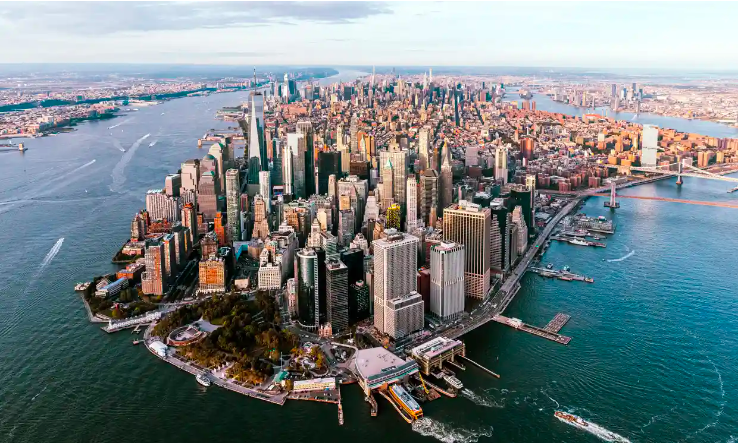Report: NYC Sinking Due to Skyscraper Weight
According to a report published in the journal Earth's Future, New York City is sinking approximately 1-2mm each year on average, with some parts sinking twice as fast, due to the weight of its high-rise buildings.

Facts
- According to a report published in the journal Earth's Future, New York City is sinking approximately 1-2mm each year on average, with some parts sinking twice as fast, due to the weight of its high-rise buildings.1
- The gradual descent of the city, being pushed by New York's more than 1M buildings weighing nearly 1.7T pounds, makes the city extremely vulnerable to natural disasters, according to lead researcher and geologist Tom Parsons of the United States Geological Survey.2
- The report says that "New York is emblematic of growing coastal cities all over the world that are observed to be subsiding," adding that the combination of a dropping city and a rising sea increases future flood risks.3
- Manhattan currently lies between one and two meters above sea level, which, though even if it sinks a small amount each year, could result in devastation as climate change brings about storms like 2012's Hurricane Sandy and 2021's Hurricane Ida, which overwhelmed drainage systems.4
- New York's buildings are built upon solid bedrock, such as schist, but also upon a mixture of other sands and clays that have been built on top of, adding to a sinking effect that is naturally occurring anyway along much of the US east coast. Parsons said that "repeated exposure to seawater...can corrode steel and destabilize buildings."1
- New York's subsidence issues are a problem found throughout the globe. With major cities projected to grow disproportionally compared to rural regions in the coming decades, the weight of the world will soon be concentrated in even more concentrated locations.3
Sources: 1Guardian, 2New York Post, 3Popular Mechanics, and 4FOX 5 New York.
Narratives
- Narrative A, as provided by ABC7 New York. New York City has dealt with the effects of climate change and its subsequent natural disasters for years, and it's well past time the government takes the steps necessary to prevent further damage from storms like Hurricane Ida. The most important step would be to stop developing flood-prone areas in the first place and, after that, creating green spaces and replacing old, narrow drain pipes in already-developed areas will help absorb rainfall and pass it out into the ocean.
- Narrative B, as provided by UN News. Immensely populated cities are one of the primary causes of climate change, but they can also be the solution. As the hubs of immigration, economic prosperity, and technological innovation, "megacities" have the opportunity to tap into the largest financial and talent pools in the world and engineer energy-efficient and walkable living spaces for everyone to enjoy. Climate change should be taken seriously, but it should be looked at through an optimistic lens regarding the potential for an urban future with smart design solutions.
- Narrative C, as provided by Times Herald. New York City is not the prosperous land of opportunity it once was, climate change aside. Its overly-populated landscape is dirty and unlivable, and the fantasy of a vertical living paradise is quickly proving unrealistic. As more than a third of New York's population of 9M is now foreign-born, it's time to invest in those currently residing in the city and implement immigration policies to spread future immigrants to other parts of the country with lots of space. The Big Apple is a symbol of unwieldy urbanization.






